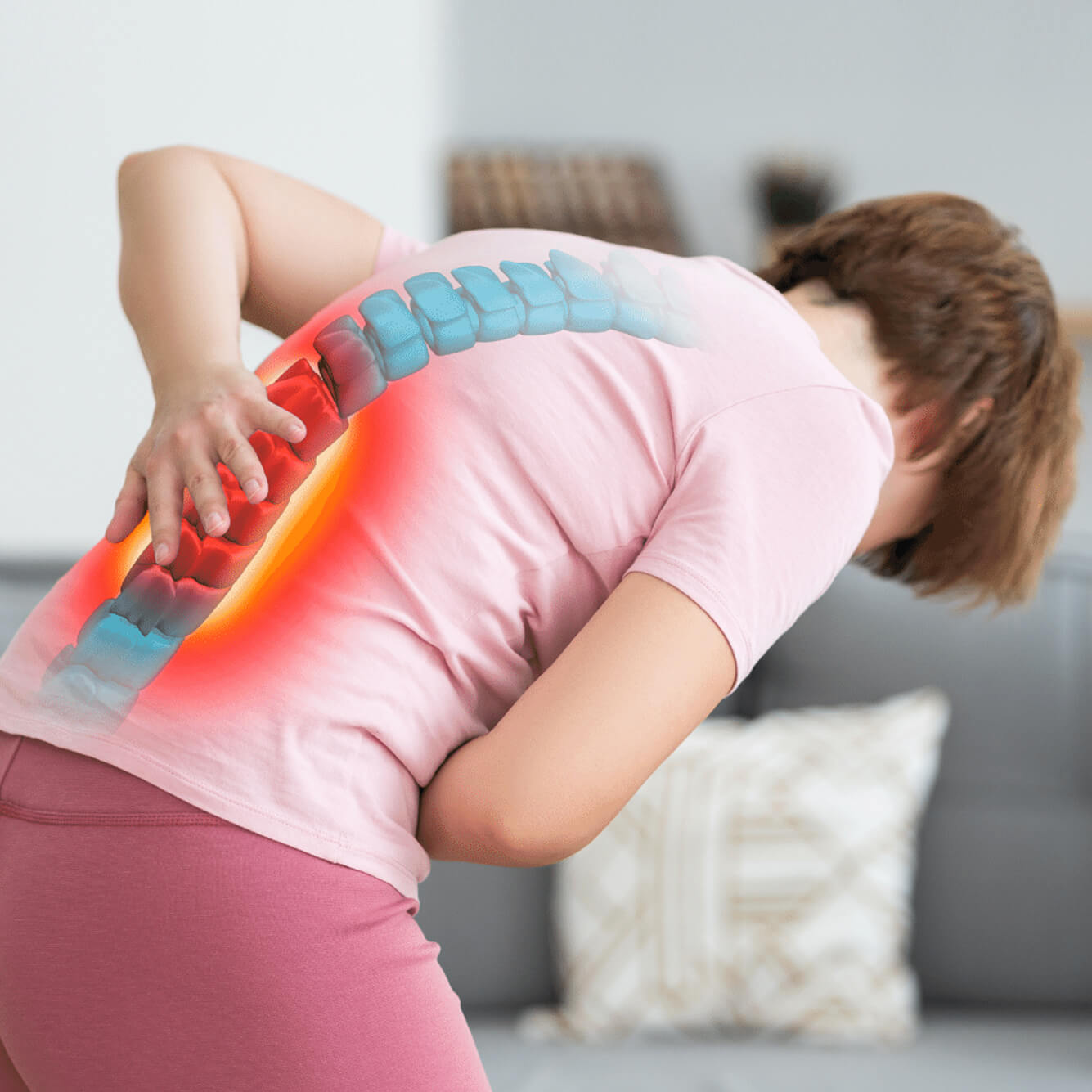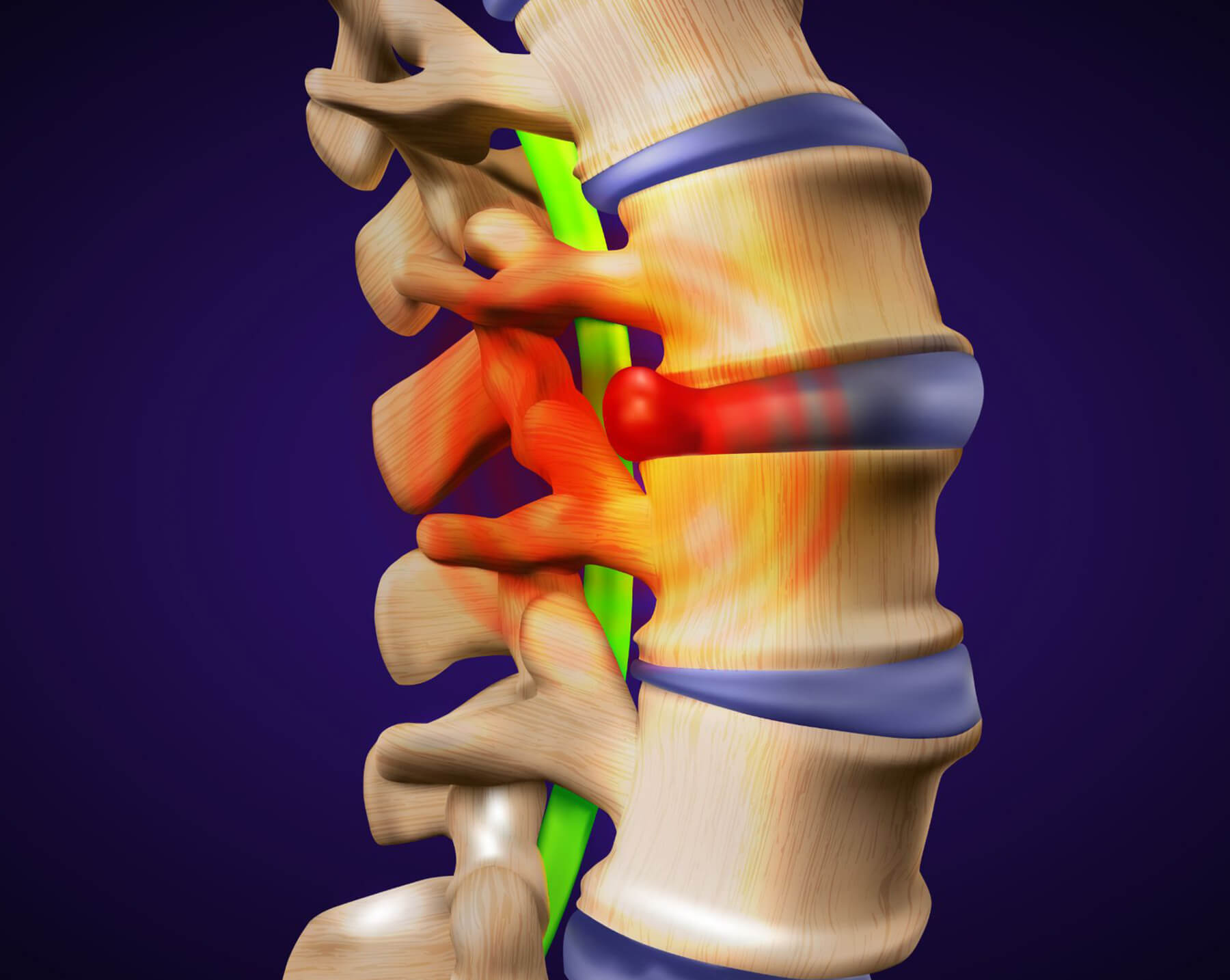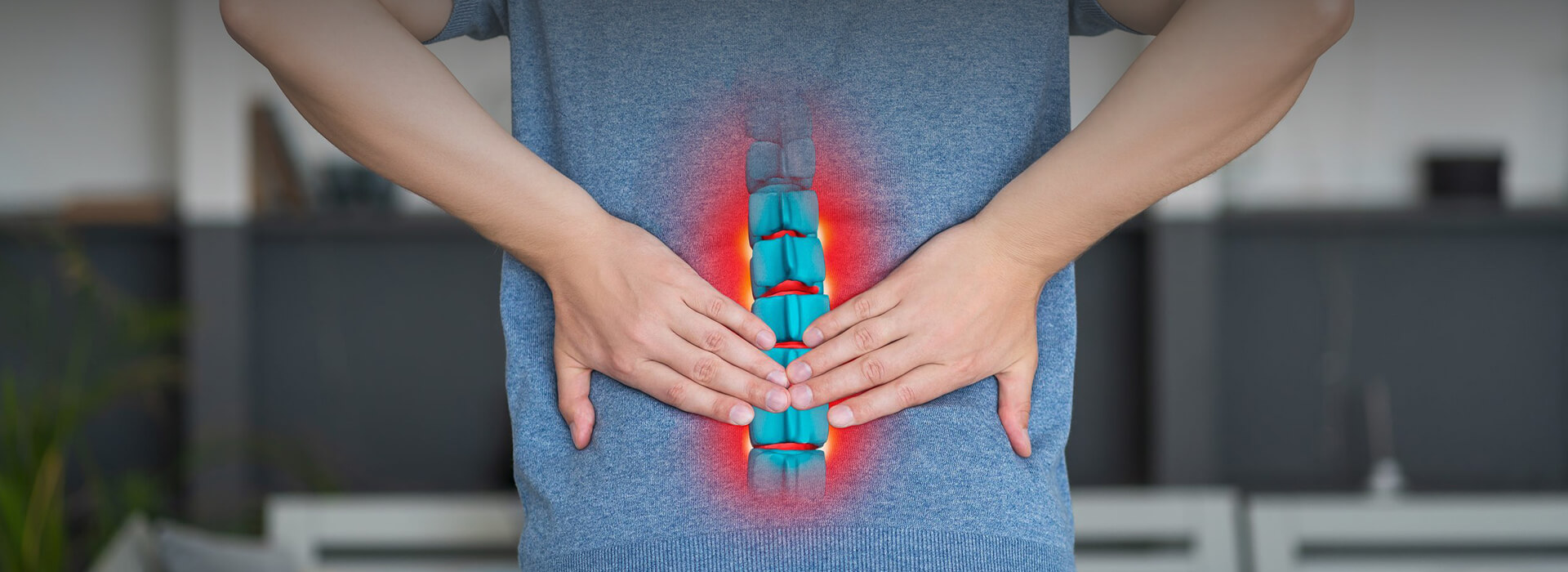

Our ServicesLumbar Disc Prolapse
Back pain is a common complaint in today’s fast-paced world, but when that pain radiates down your leg or causes numbness, it may be more than just a muscle strain. One such condition responsible for these symptoms is lumbar disc prolapse, often referred to as a herniated or slipped disc.

What Is Lumbar Disc Prolapse?

The human spine is made up of 33 vertebrae, with discs between each vertebra acting as cushions. These discs have a soft, gel-like center called the nucleus pulposus, and a tougher outer layer called the annulus fibrosus.
A lumbar disc prolapse occurs when the inner gel pushes out through a tear or weakness in the outer layer of a disc in the lower back (lumbar spine). This herniation can press on nearby nerves, causing pain, numbness, or weakness.
When conservative  care needs
care needs
a specialist’s touch.
touch.
Causes and Risk FactorsSeveral factors can contribute to the development of a lumbar disc prolapse:
Age-related degeneration As we age, discs lose water content and become less flexible.
Repetitive stress: Poor posture, heavy lifting, or repetitive bending and twisting can strain the spine.
Sudden trauma: Falls or accidents may cause acute disc herniation.
Genetics: Some individuals may be more prone to disc problems due to hereditary factors.
Obesity and sedentary lifestyle: Extra body weight puts more pressure on the spine and discs.
Symptoms to Watch Out ForThe symptoms depend on the location and severity of the prolapse:
Lower back pain: Often the first sign.
Sciatica: Radiating pain from the lower back down the buttock and leg, usually on one side.
Numbness or tingling: Especially in the leg or foot.
Muscle weakness: Difficulty in lifting the foot (foot drop) or standing on toes.
Bowel or bladder dysfunction (rare but serious): May indicate cauda equina syndrome, a medical emergency.
DiagnosisA thorough clinical evaluation is the first step, often followed by imaging tests:
MRI (Magnetic Resonance Imaging): Most accurate for assessing disc prolapse and nerve compression.
CT scans or X-rays: May be used in certain cases.
Nerve conduction studies: To evaluate nerve damage if symptoms are severe or unclear.
Treatment Options
Treatment varies based on the severity of the symptoms and the patient’s response to initial management.01.
Conservative Management (First Line)
- Rest and activity modification: Short-term rest followed by gradual return to activities.
- Medications: Pain relievers, anti-inflammatories, and muscle relaxants.
- Physiotherapy: Exercises to strengthen the back and improve flexibility.
- Epidural steroid injections: In cases of persistent pain.
Surgical Treatment
If conservative methods fail after 6–8 weeks or if there are signs of significant nerve damage, surgery may be considered:
- Microdiscectomy: The most common procedure where the herniated portion of the disc is removed.
- Laminectomy: Removal of part of the vertebral bone to relieve pressure.
- Spinal fusion: Rarely used for disc prolapse but may be needed in unstable or recurrent cases.
Prevention Tips
Practice good posture: Especially when sitting or lifting.
Exercise regularly: Strengthen core muscles to support the spine.
Maintain a healthy weight: Reduces stress on the spine.
Quit smoking: Smoking reduces disc nutrition and accelerates degeneration.
Use ergonomic furniture: Especially important for desk jobs.
Final Thoughts
Lumbar disc prolapse can significantly impact daily life, but with timely diagnosis and the right treatment approach, most people recover well. Don’t ignore persistent lower back pain-early intervention can prevent complications and help you get back to a pain-free, active life.

